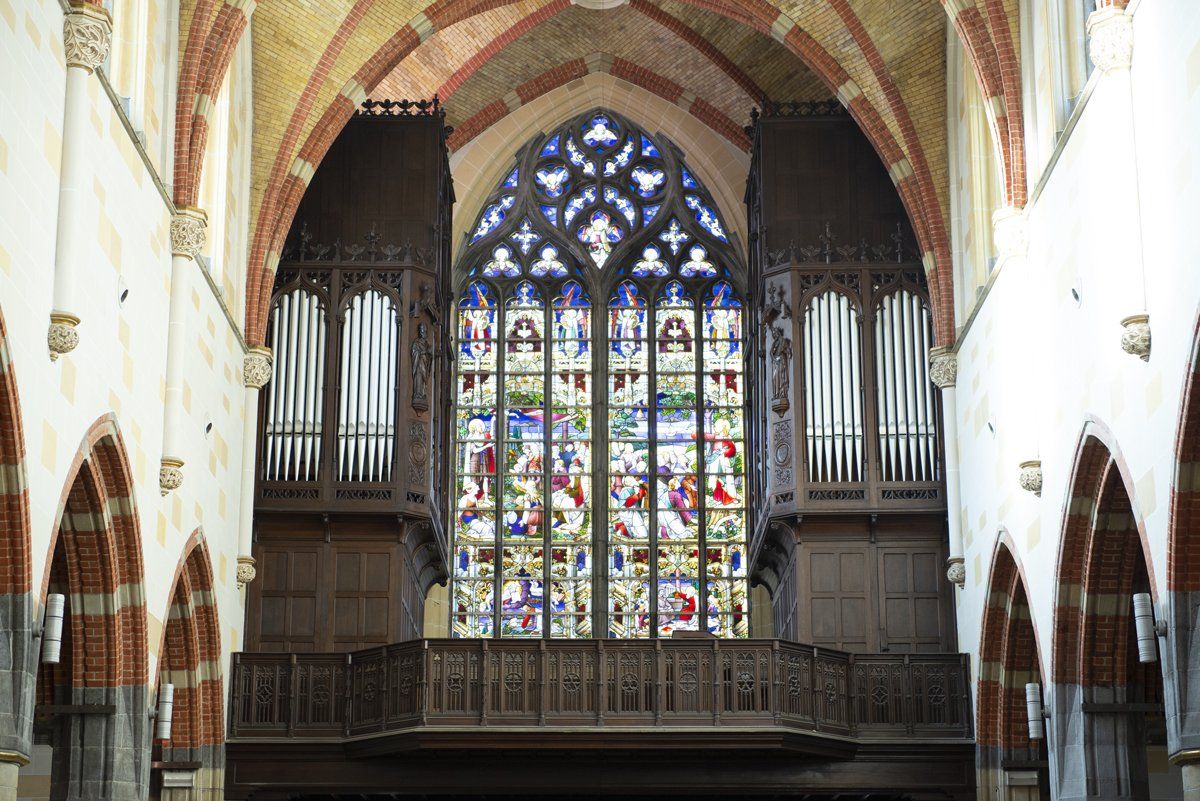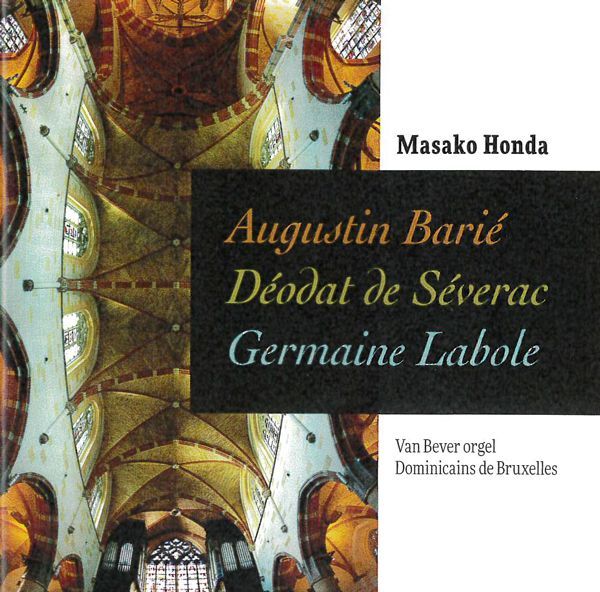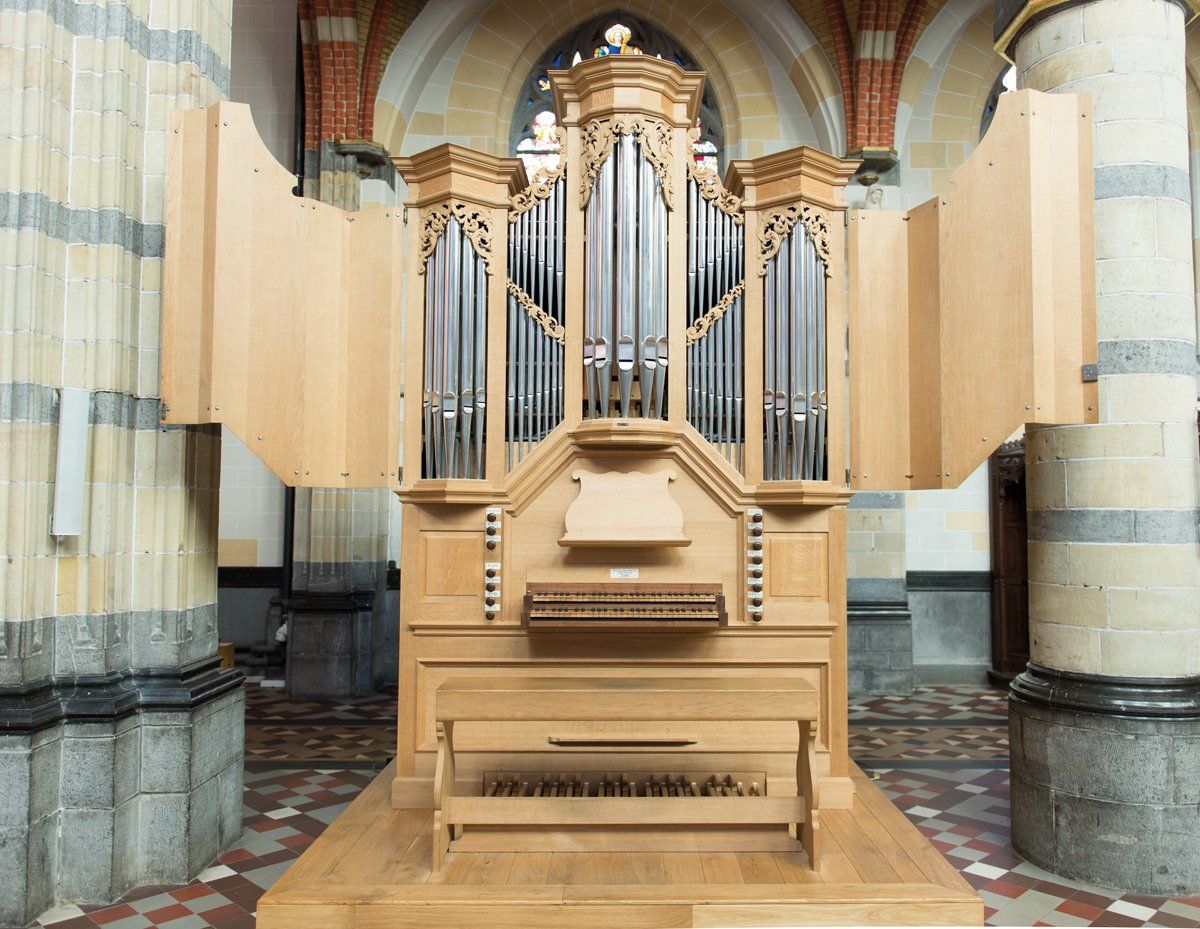Organs
Dominican’s church
Adrien & Salomon Van Bever 1910 Large Organ
The large Van Bever organ is the most important and complete of the instruments built by the brothers Adrien and Salomon Van Bever. They learned their trade in the workshops of Aristide Cavaillé-Coll and of Hippolyte Loret. The two brothers from Laeken, were very influent organ builders of the nineteenth and twentieth centuries. Their work resulted in the concept and the development of the "Belgian romantic organ".
Excepted for two modified registers in 1959 – which were brought back to their original condition during the last restoration (2013-15) – the instrument came down to us integrally in its original state. During the restoration, an electrical assistance was introduce, in order to allow a greater comfort in the use of the Swell to Choir. However, this system can be disconnected, leaving the organ in its original historical state. Thus, this system allows to choose between mechanically or electrically coupling.
The organ is especially appreciated for its foundation stops, which are the solid bases of the sonorous pyramid. The large Van Bever organ at the Dominican's church is perfectly suited for the literature between 1850 and 1940 as well as contemporary organ music. Besides its liturgical use, it is regularly used as a concert instrument.
Disposition
| I. GRAND-ORGUE (56 notes) | II. POSITIF EXPRESSIF (56 notes) | III. RÉCIT EXPRESSIF (56 notes) | PÉDALE (30 notes) |
|---|---|---|---|
| Bourdon 16 | Quintaton 16 | Bourdon 16 | Contre Basse 16 |
| Montre 8 | Clarinette 8 | Flute Traversière 8 | Soubasse 16 |
| Flute Harmonique 8 | Flute Douce 4 | Bourdon 8 | Flute 8 |
| Gambe 8 | Flageolet 2 | Violon 8 | Voloncelle 8 |
| Flute 4 | Carillon | Tierce 1 3/5 | Bombarde 16 |
| Prestant 4 | Principal 8 | Flute Octave 4 | |
| Fourniture III-V | Cor de Nuit | Octavin 2 | |
| Cornet V | Salicional 8 | Quinte 2 2/3 | |
| Clairon 4 | Voix Céleste 8 | Voix Humaine 8 | |
| Trompette 8 | Basson Hautbois 8 | ||
| Trompette Harmonique 8 | |||
| Accouplements et tirasses | Anches Récit | ||
| III/II, III/I, II/I, III16’/I, I/P, II/P, III/P | Anches Positif | ||
| Anches Grand-orgue | |||
| Tremolo |
A= 429 Hz
Restauration Jean-Pierre Draps 2013-15
Discography
Sound extracts
Thomas 2006 Organ
After realizing many instruments inspired by German baroque models, the Manufacture Thomas decided to build such an instrument without, of course, making a slavish imitation. Conceived at first to be a chamber organ for private use, it became a larger instrument to be used both in liturgy and in concerts.
The front consists of the largest possible number of pipes of the Principal 4 of the Great, in order to give a solid foundation to the whole pyramid of sounds. The organ is a decorative element; we have opted for a finish of the case to plane. Both the mouldings and the case finish give a surprising result in terms of relief.
The keyboards, the pedal board and the register knobs are part of the "console en fenêtre". For the Flûte 4, we used the de "jeux baladeurs" system, which allows to play this stop either on the Great or on the Positive. This broadens the scope of sonorities, although a little unconventionally, in an efficient, interesting and reliable way.
According to some people, this organ has its limits. Its disposition, its keyboards, its sonorities and temperament, are not exactly those to which we are accustomed. But the instrument will submit to whoever will be patient enough and will try to understand it.
Let us wish that this organ ideally accompanies the singing of the community and of the congregation, and that it will enhance church services through repertory and improvisation: music enriches the prayer's silence.
Disposition
| I. GRAND-ORGUE (58 notes) | II. POSITIF (58 notes) | PÉDALE (27 notes) |
|---|---|---|
| Flûte ouverte 8 | Bourdon 8 | Soubasse 16 |
| Gambe 8 | Flûte 4 | Basse 8 |
| Principal 4 | Dulzian 8 | |
| Flûte 4 | ||
| Nazard 3 | Tremblant | |
| Octave 2 | II/I, II/P, I/P | |
| Quinte 1 1/3 | ||
| Flûte 4 = jeu baladeur |
A = 440 Hz
Tempérament Meurice / Thomas






